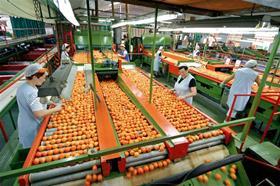
A European Union decision to extend tariff reductions for imports of South African citrus has been met with consternation by Spanish producers as they ease into what is shaping up to be a challenging season.
Until now, South Africa has enjoyed a tariff free period from July to 16 October. But following the recent signing of the economic partnership agreement with the South African Customs Union, the EU has agreed to a gradual reduction of tariffs for the six-week period to the end of November over the next decade until they reach zero.
Last year, South Africa shipped more than 400,000 tonnes of citrus – mainly oranges – to Europe and Spain has raised concerns of the commercial impact of the move, as well as the phytosanitary danger posed by citrus black spot.
The 2016/17 campaign has got off to a sluggish start, with warm weather keeping demand in check across northern Europe and the heavier crop slowing sales and putting downward pressure on prices.
The most recent forecasts released by the Citrus Management Committee (CGC) point to a volume of just over 7m tonnes, similar in size to the 2014/15 crop. However, the prolonged drought has resulted in an abundance of smaller sizes and will limit the volume available for the fresh market.
CGC’s president Vicente Bordils told Valencia’s Levante newspaper that early clementine varieties face growing competition from late-season Southern Hemisphere mandarins and the sizing issue will exacerbate the situation this season.
On a more positive note, he points out that excellent quality of this year’s crop and that the eventual arrival of cooler temperatures in Europe should stimulate demand. On the supply side, the sharp fall in this year’s Italian crop and levelling off of Morocco’s clementine production, coupled with the rise in interceptions of Turkish citrus due to concerns over pesticide residues all weigh in Spain’s favour.



